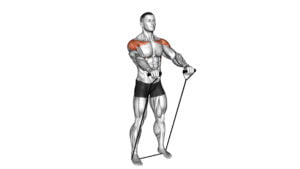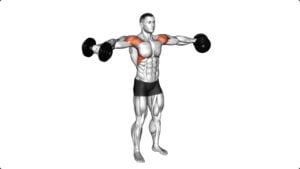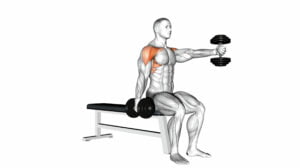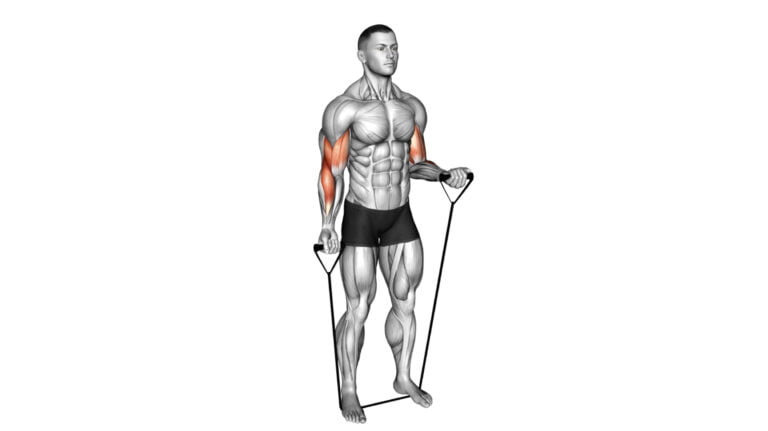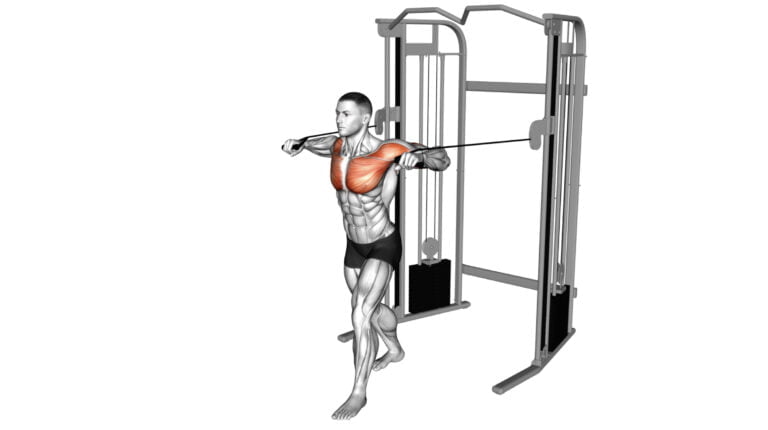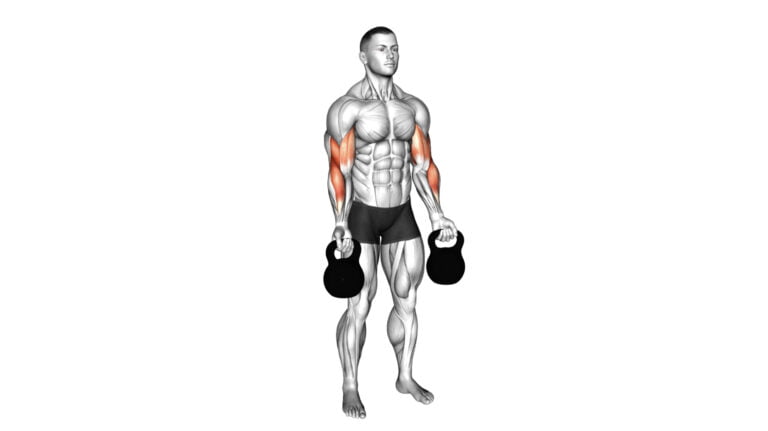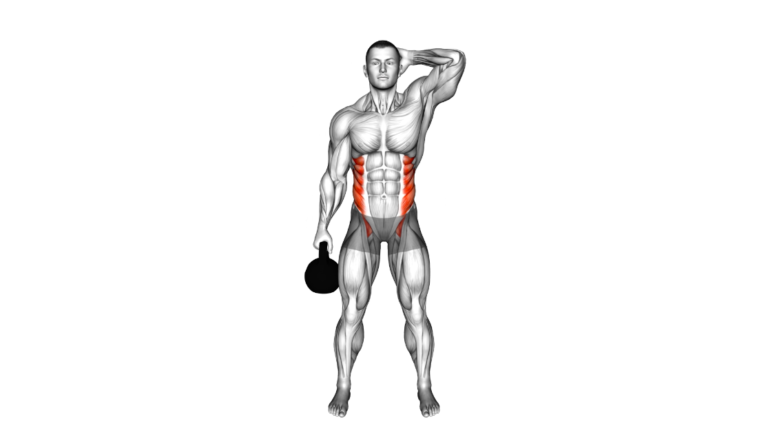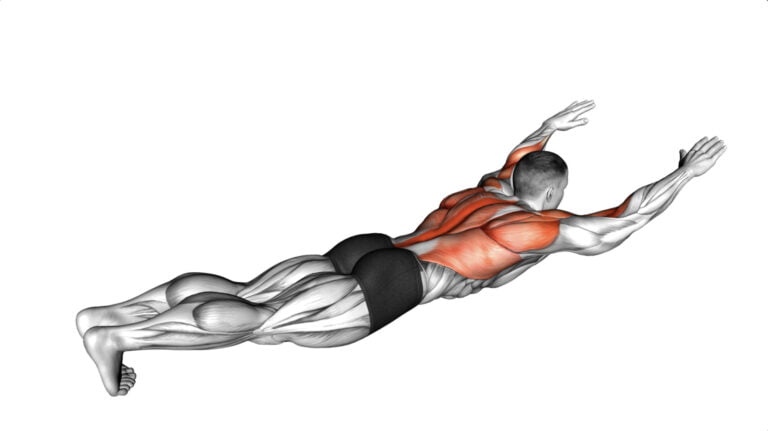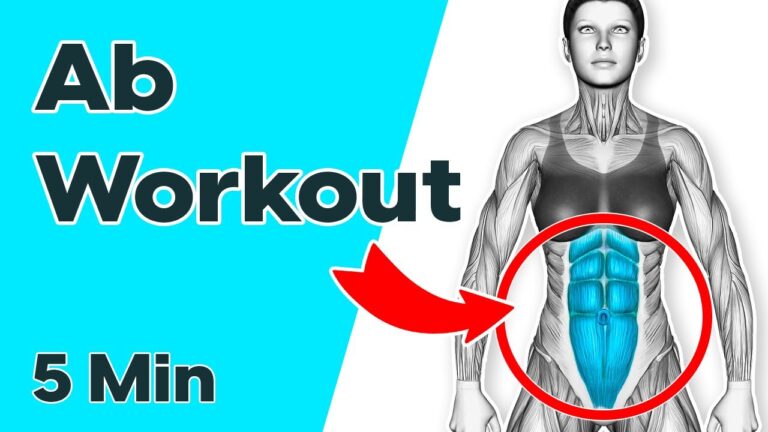5 Best Overhead Exercises With Dumbbells – Get Strong Shoulders Fast!
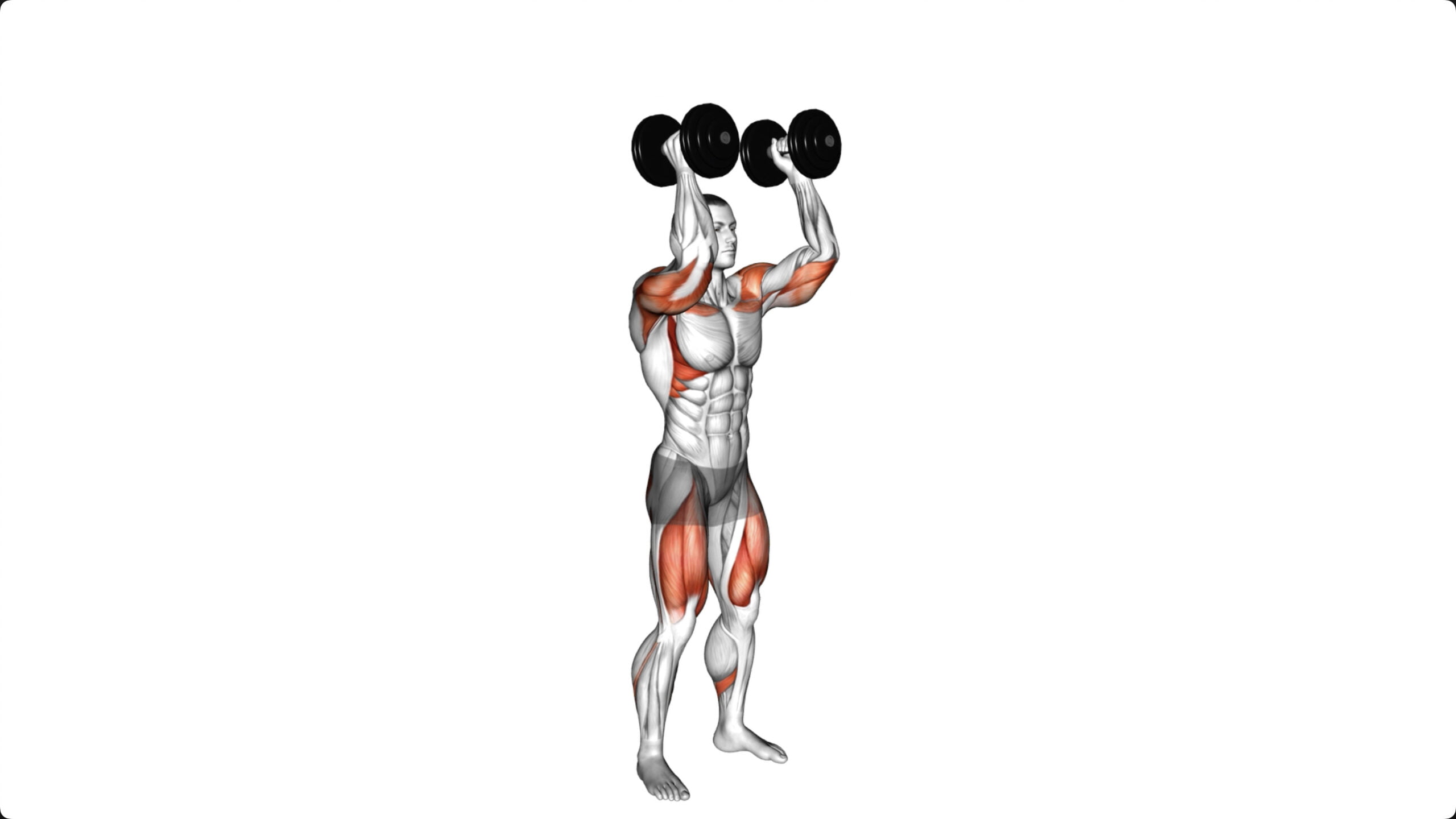
If you’ve ever set foot in a gym, you know the allure of building strength and power. As someone with years of experience helping clients sculpt their ideal physique, I can attest to the effectiveness of incorporating overhead dumbbell exercises into your routine.
Not only do they enhance muscle mass and shoulder stability, but they also challenge multiple areas at once for a comprehensive full-body workout.
Imagine powering through your fitness plateau with just a pair of dumbbells at your disposal. That’s the beauty of these moves—they require minimal equipment yet yield maximum results.
In this article, we’ll dive into five overhead exercises that promise to elevate your training game. Read on for techniques that will redefine your upper body strength. Ready to lift?.
Key Takeaways
- Overhead dumbbell exercises improve strength, muscle mass, balance, coordination, and can be adapted to all fitness levels.
- Proper form is essential for preventing injury and maximizing the effectiveness of each movement in overhead exercises.
- Incorporating a variety of overhead movements engages multiple muscle groups for a comprehensive full-body workout.
- Starting with lighter weights is crucial for safety and progressively increasing as you build strength ensures continuous improvement.
- Rest days are important for muscle recovery and growth; professional guidance may be beneficial for optimal technique.
Benefits of Overhead Dumbbell Exercises
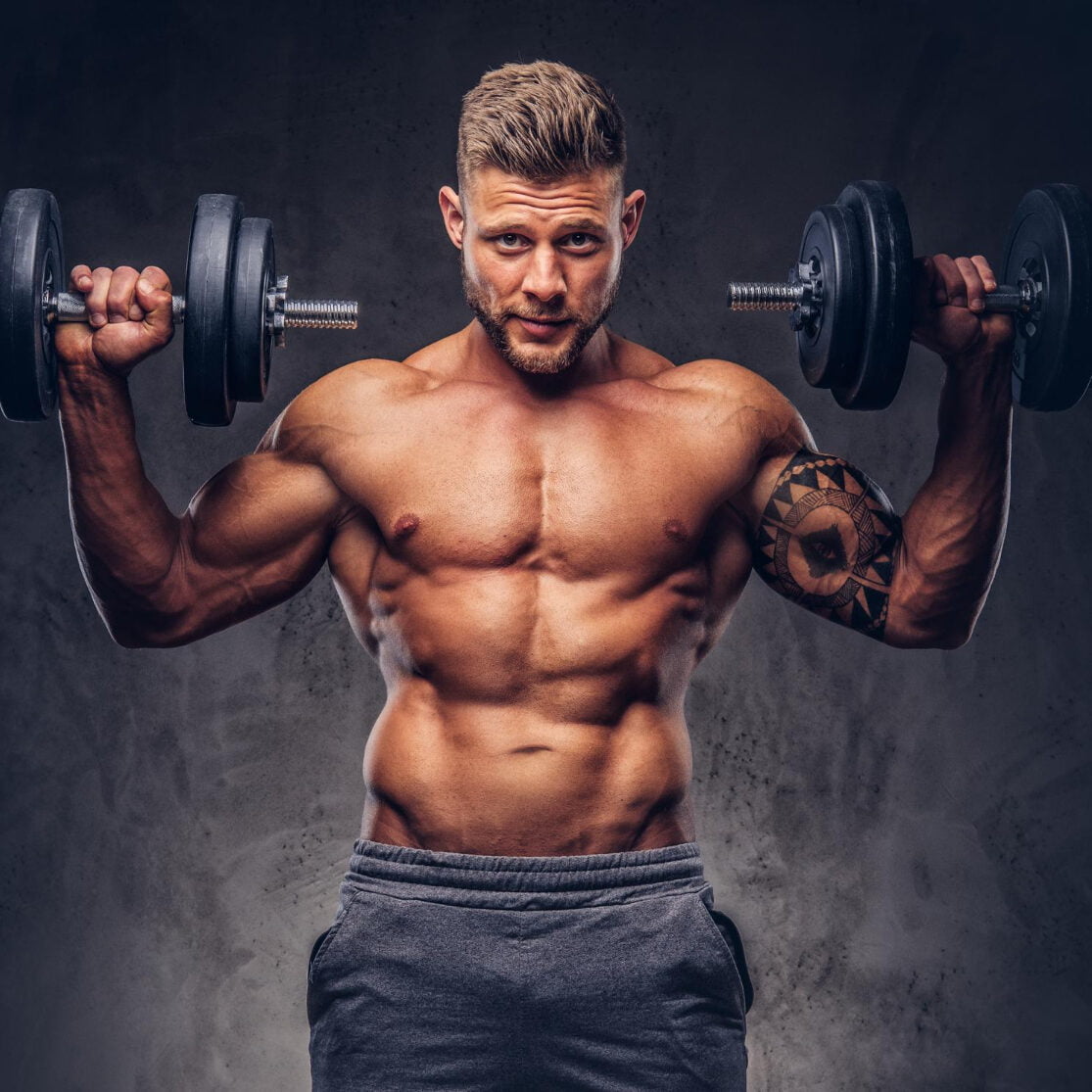
Overhead dumbbell exercises offer a multitude of benefits, including improved overall strength, increased muscle mass, engagement of multiple muscle groups, improved balance and coordination, and the ability to adapt for various fitness levels.
Improved overall strength
Working with dumbbells on overhead exercises can lead to impressive gains in overall strength. As you press, push, and lift weights above your head, every rep contributes to a stronger upper body.
Your shoulders, triceps, deltoids, and even your core muscles work together during these movements. This collaboration of muscle groups is the secret sauce that strengthens not just individual muscles but also enhances neuromuscular coordination.
With each repetition of exercises like the standing position shoulder press or hammer curls transitioning into a push press, your body adapts by getting stronger. The consistent contraction and extension involved in weight training require effort from stabilizing muscles too—meaning even those smaller muscle fibers are getting a challenging workout.
Engaging them properly ensures balanced development across different parts of your body for functional strength you can rely on day after day.
Increased muscle mass
Engaging in overhead dumbbell exercises can significantly increase your muscle mass, particularly targeting the deltoid muscles in your shoulders as well as your triceps and upper back.
As you press the weights upward, every repetition demands strength from these primary movers along with the stabilization muscles. This comprehensive engagement of multiple muscle groups not only builds leaner, stronger arms but also contributes to a more defined physique.
Building muscle isn’t just about looking good; it’s essential for boosting metabolism and improving overall body function. Regularly incorporating moves like the overhead press upscales your strength training regimen, ensuring that each session maximizes muscle growth.
Push through those presses and lunges—your body will thank you by crafting a fortress of robust muscles ready to tackle everyday tasks with ease. Next up: how engaging different muscle groups leads to even better results.
Engages multiple muscle groups
Overhead dumbbell exercises are like a full-body tune-up. They challenge your arms, shoulders, and back while also calling on the stabilizing muscles in your core. Every lift of the dumbbells is a compound movement that efficiently works several muscle groups at once.
It’s not just about building biceps; as you press overhead, your body recruits muscles from head to toe—shoulder blades tighten, calves engage to stabilize you, and hamstrings work to keep your balance steady.
This multitasking approach ensures maximum benefit from each repetition. You’re not only saving time but also boosting the efficiency of your workouts by activating many muscles together.
Think of each push up or press-up as an opportunity for multiple gains across various areas of the body—including those hard-to-reach places like the smaller support muscles that often get overlooked with isolation exercises.
Now let’s dive into proper form to maximize these benefits.
Improves balance and coordination
Engages multiple muscle groups during overhead exercises also fosters improved balance and coordination. By holding dumbbells above the head, this challenges your stability, forcing you to engage various muscles to maintain control throughout the movement.
This not only helps strengthen the core but also enhances overall coordination, essential for daily activities and sports performance.
These compound movements trigger a cascade of reactions within your body, stimulating interconnected muscle groups that are crucial for maintaining equilibrium in dynamic situations.
Proper Form for Overhead Dumbbell Exercises
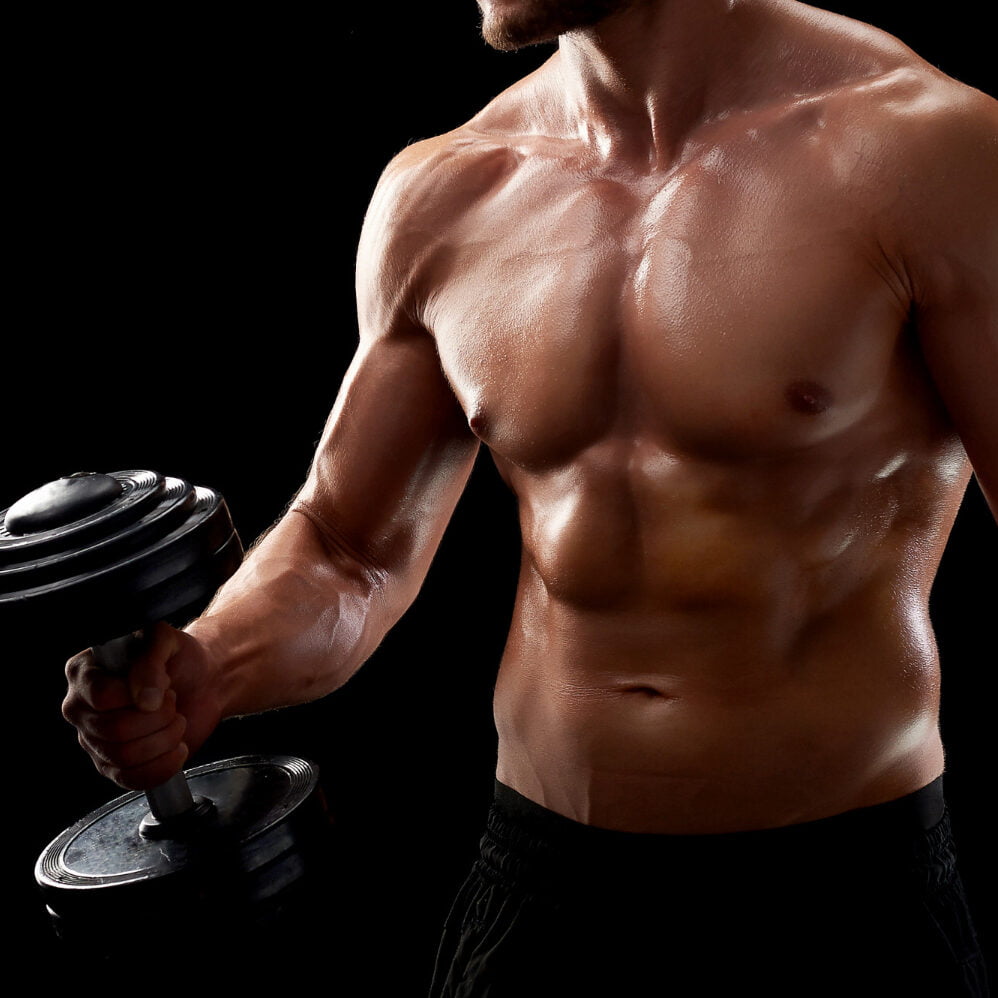
Maintain proper posture and alignment during overhead dumbbell exercises to prevent injury and maximize effectiveness. Focus on controlled movements, avoiding locking elbows or arching the back.
Maintain proper posture and alignment
Proper posture and alignment are crucial for executing overhead dumbbell exercises effectively and safely. Keep your feet shoulder-width apart, engage your core muscles, and make sure to stand tall with your shoulders back.
As you lift the dumbbells overhead, avoid leaning backward or forward; instead, focus on keeping your body straight by tightening your abdominal muscles. Additionally, ensure that there is a slight natural curve in the lower back without overarching it to prevent unnecessary strain.
Maintaining proper posture and alignment not only reduces the risk of injury but also optimizes muscle engagement during overhead dumbbell exercises. Focus on keeping your head in a neutral position, eyes facing forward, while avoiding any excessive neck straining or tilting.
Focus on controlled movements
Maintain proper posture throughout the exercise to avoid strain on the lower back. Engage your core and keep your knees slightly bent to ensure stability while moving. Slowly lift the dumbbells overhead, extending your arms fully, and then lower them back down with a controlled motion.
Throughout each repetition, focus on keeping a steady pace and avoid swinging or jerking movements. This will not only maximize muscle engagement but also reduce the risk of injury.
Remember to breathe in as you raise the dumbbells and exhale as you bring them down to maintain a consistent rhythm and prevent breath-holding during the exercise.
Avoid locking elbows or arching the back
Keep your arms slightly bent throughout the movement to prevent locking elbows. Ensure your back remains straight without arching to avoid strain and maintain proper form while performing overhead dumbbell exercises.
Focus on engaging your core muscles to stabilize your body, preventing unnecessary stress on the lower back and promoting safe, effective workouts.
5 Best Overhead Dumbbell Exercises
Incorporating a variety of overhead dumbbell exercises into your workout routine can help you build strength and improve overall muscle tone. These exercises engage multiple muscle groups, providing a full-body workout that can be adapted to different fitness levels.
1. Dumbbell Squat to Overhead Press
Perform the dumbbell squat to overhead press by holding a dumbbell in each hand at shoulder level. Begin by standing with your feet hip-width apart and toes slightly turned out, then lower into a squat position, keeping your chest up and core engaged.
Push through your heels to return to a standing position while pressing the dumbbells directly overhead, extending your arms fully. Lower the weights back down to shoulder level as you descend into the next squat.
This compound exercise works multiple muscle groups simultaneously, targeting your lower body, shoulders, and triceps. It not only builds strength but also enhances functional movement patterns essential for everyday activities like lifting or reaching overhead.
Incorporating this dynamic move will help you achieve better overall muscle engagement and coordination throughout your fitness routine.
2. Dumbbell Overhead Squat
The dumbbell overhead squat is a challenging full-body exercise that targets your legs, glutes, core, and shoulders. Begin by holding a dumbbell in each hand with your arms fully extended overhead.
Keep your chest up and lower yourself as if sitting back into an imaginary chair while maintaining the position of the dumbbells directly above your head. Push through your heels to return to standing position.
This exercise not only builds strength but also improves balance and flexibility.
Incorporating dumbbell overhead squats into your workout routine can help enhance overall functional strength and stability, making it an excellent addition for anyone looking to improve their athletic performance or daily activities requiring lower body strength and control.
It’s also a great way to challenge different muscle groups simultaneously, promoting efficient use of time during workouts.
3. Dumbbell Overhead Lunge
How to perform the Dumbbell Overhead Lunge? With dumbbells in hand, stand tall and step forward into a lunge position. As you lower your body down, press the dumbbells overhead until your arms are fully extended. Keep your shoulders stabilized as you push back up to the starting position.
Engaging both upper and lower body muscles, this exercise adds an extra challenge to traditional lunges.
Maintain control throughout the movement while ensuring proper alignment of knees and ankles. This exercise is great for enhancing overall strength and stability in multiple muscle groups, making it a valuable addition to any workout routine.
4. Dumbbell Standing Alternate Overhead Press
Moving from the dynamic movement of the Dumbbell Overhead Lunge, we transition to another effective exercise in the form of the Dumbbell Standing Alternate Overhead Press. This exercise elevates your shoulder workouts by engaging a wider range of muscle groups as well as enhancing stability and strength.
Begin with a dumbbell in each hand at shoulder height, then press one dumbbell overhead while keeping the other at your shoulder. Lower it back down to your shoulder before pressing up with the opposite arm.
This alternating action not only targets your shoulders but also engages core muscles for stability while challenging balance and coordination. With proper execution, this exercise promotes muscular endurance and overall upper body strength.
Pressing one dumbbell overhead at a time challenges both sides independently, promoting balanced muscle development and addressing any strength imbalances between your left and right side.
5. Dumbbell Single Arm Overhead Carry
Transitioning from the Dumbbell Standing Alternate Overhead Press to the next exercise, the Dumbbell Single Arm Overhead Carry engages the core and stabilizing muscles while challenging coordination and balance.
Holding a dumbbell overhead in one hand, you’ll walk with purposeful steps for a designated distance or time. This exercise not only strengthens your shoulder and arm muscles but also builds stability in your core, helping to improve posture and overall upper body strength.
Adding the Dumbbell Single Arm Overhead Carry to your routine can assist in developing unilateral strength, addressing any muscle imbalances between both sides of your body. This dynamic exercise requires focus and control as you maintain proper form throughout each step, making it an effective addition to any full-body workout regimen.
Tips for Safe and Effective Workouts
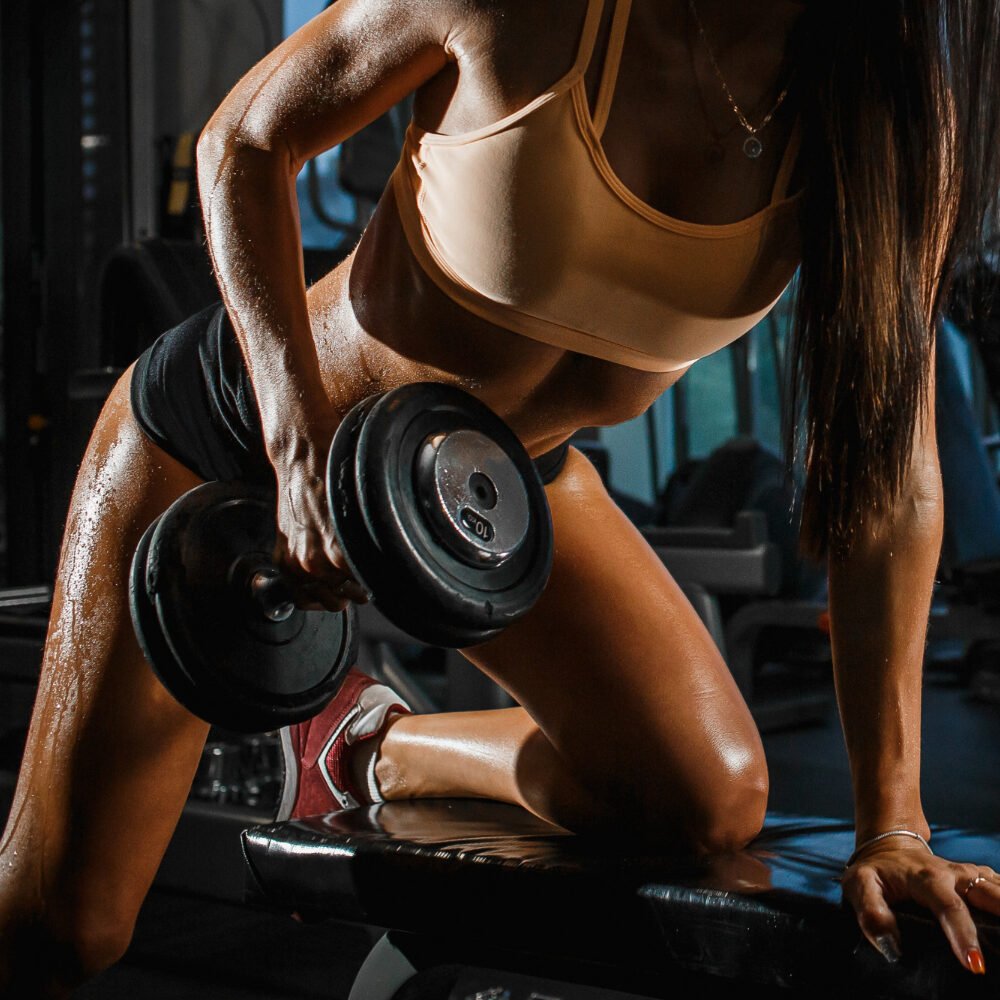
Start with lighter weights and gradually increase as you build strength. Don’t push through pain; listen to your body and rest when needed. Remember to consult a professional trainer if you’re unsure about proper form or technique.
Start with lighter weights
Begin with lighter weights to allow your muscles to adapt and prevent injury. Gradually increase the weight as you build strength and confidence.
Transitioning into heavier weights can be a smooth progression towards achieving your fitness goals without risking strain or overexertion.
Don’t push through pain
Pain during overhead dumbbell exercises is a signal that something might be wrong. Ignoring or pushing through pain can lead to injury and setbacks in your fitness journey, making it crucial to listen to your body.
If you experience any discomfort beyond muscle fatigue, stop the exercise and assess what might be causing the pain. Adjust your form, reduce the weight, or consult with a fitness professional if needed.
Ignoring pain during workouts can lead to long-term issues and hinder progress. It’s essential to distinguish between manageable discomfort associated with challenging workouts and actual pain that could indicate an underlying problem.
Rest and recover between workouts
Rest and recovery between workouts is crucial for muscle repair and growth. Give your body time to heal by incorporating rest days into your workout routine. This will help prevent overtraining and reduce the risk of injury, allowing you to perform at your best during each session.
Listening to your body’s signals is essential—take a break if you feel fatigued or notice any persistent discomfort in specific muscle groups. Remember, recovery is just as important as the exercise itself for achieving optimal results.
Prioritize adequate sleep, proper nutrition, and active recovery methods such as stretching or light cardio on rest days to support overall fitness progress. Always pay attention to how your body feels after each workout before planning the next one.
Consult a professional trainer if needed
If you are new to overhead dumbbell exercises or have any concerns about your form or technique, it’s advisable to consult a professional trainer. A certified trainer can provide personalized guidance and ensure that you perform the exercises safely and effectively, helping you maximize the benefits while minimizing the risk of injury.
Their expertise can also help tailor your workout routine to match your fitness level and goals.
To get the most out of your workout plan, speaking with a professional will set clear objectives for improved performance and overall strength development as well as prevent any potential injuries from improper execution of these exercises.
Stay hydrated and fuel your body properly.
Hydrating your body and maintaining proper nutrition are vital components of a successful workout regimen. Drinking an adequate amount of water before, during, and after exercise helps optimize physical performance by regulating body temperature, lubricating joints, and transporting nutrients to cells.
Fueling your body with a balanced diet rich in carbohydrates, lean protein, and healthy fats provides the energy necessary for muscle recovery and growth. Additionally, replenishing electrolytes lost through sweat is crucial in preventing dehydration and maintaining overall well-being while engaging in overhead dumbbell exercises or any physical activity.
Proper hydration enhances endurance and stamina during workouts while aiding in the prevention of cramps or fatigue. Ensuring that your body has the essential nutrients it needs assists in muscle repair following intense overhead dumbbell exercises.
Conclusion
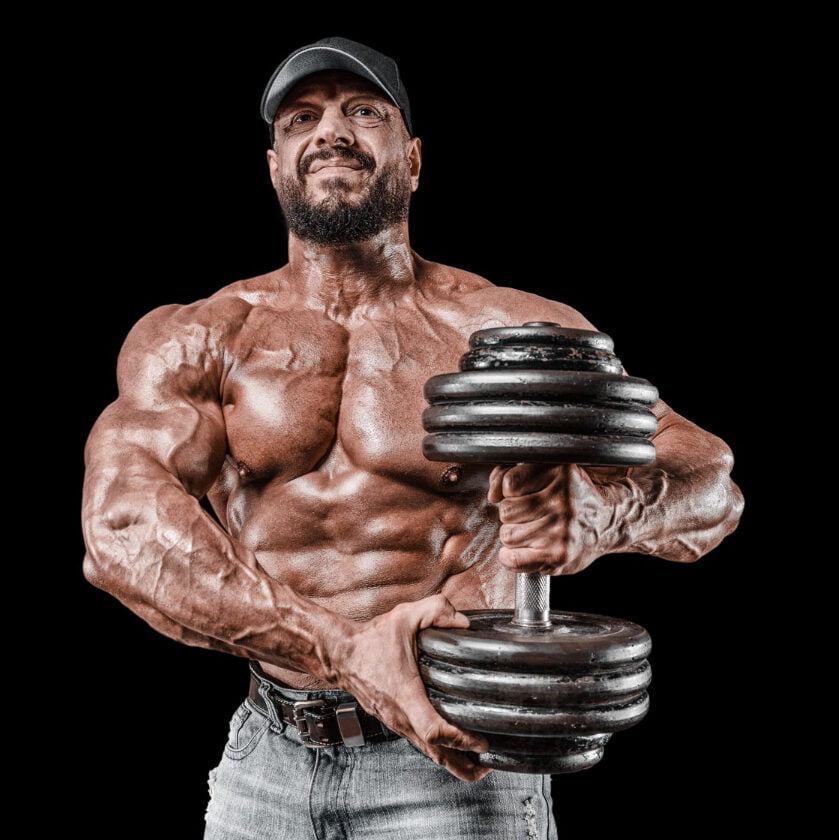
To summarize, the 5 overhead dumbbell exercises provide practical and efficient ways to enhance overall strength and muscle mass. Implementing these exercises can lead to improved balance, coordination, and engagement of multiple muscle groups.
The importance of proper form cannot be overstated as it ensures safe and effective workouts. Embracing these strategies can have a significant impact on fitness goals and overall well-being.
Keep pushing towards your fitness objectives with determination and consistency!
FAQs
1. What are some dumbbell exercises I can do to work out my upper body?
You can boost your upper body strength with exercises like overhead presses, Romanian deadlifts for your shoulders and back, and press-ups using dumbbells for added weight.
2. Can I use kettlebells instead of dumbbells for overhead workouts?
Totally! Kettlebells work great if you don’t have dumbbells, especially when doing moves like goblet squats or calf raises with an overhand grip.
3. How many repetitions should I do during these 5 overhead exercises?
Aim for a set of repetitions that challenges you without sacrificing good form, which often means doing 8-12 reps per exercise depending on your fitness level.
4. Do I need any other equipment besides dumbbells to perform these exercises effectively?
While just using dumbbells will give you a solid workout, mixing it up by adding an exercise ball or barbells can keep things interesting and work different muscles.

Author
Years ago, the spark of my life’s passion ignited in my mind the moment I stepped into the local gym for the first time. The inaugural bead of perspiration, the initial endeavor, the very first surge of endorphins, and a sense of pride that washed over me post-workout marked the beginning of my deep-seated interest in strength sports, fitness, and sports nutrition. This very curiosity blossomed rapidly into a profound fascination, propelling me to earn a Master’s degree in Physical Education from the Academy of Physical Education in Krakow, followed by a Sports Manager diploma from the Jagiellonian University. My journey of growth led me to gain more specialized qualifications, such as being a certified personal trainer with a focus on sports dietetics, a lifeguard, and an instructor for wellness and corrective gymnastics. Theoretical knowledge paired seamlessly with practical experience, reinforcing my belief that the transformation of individuals under my guidance was also a reflection of my personal growth. This belief holds true even today. Each day, I strive to push the boundaries and explore new realms. These realms gently elevate me to greater heights. The unique combination of passion for my field and the continuous quest for growth fuels my drive to break new ground.





